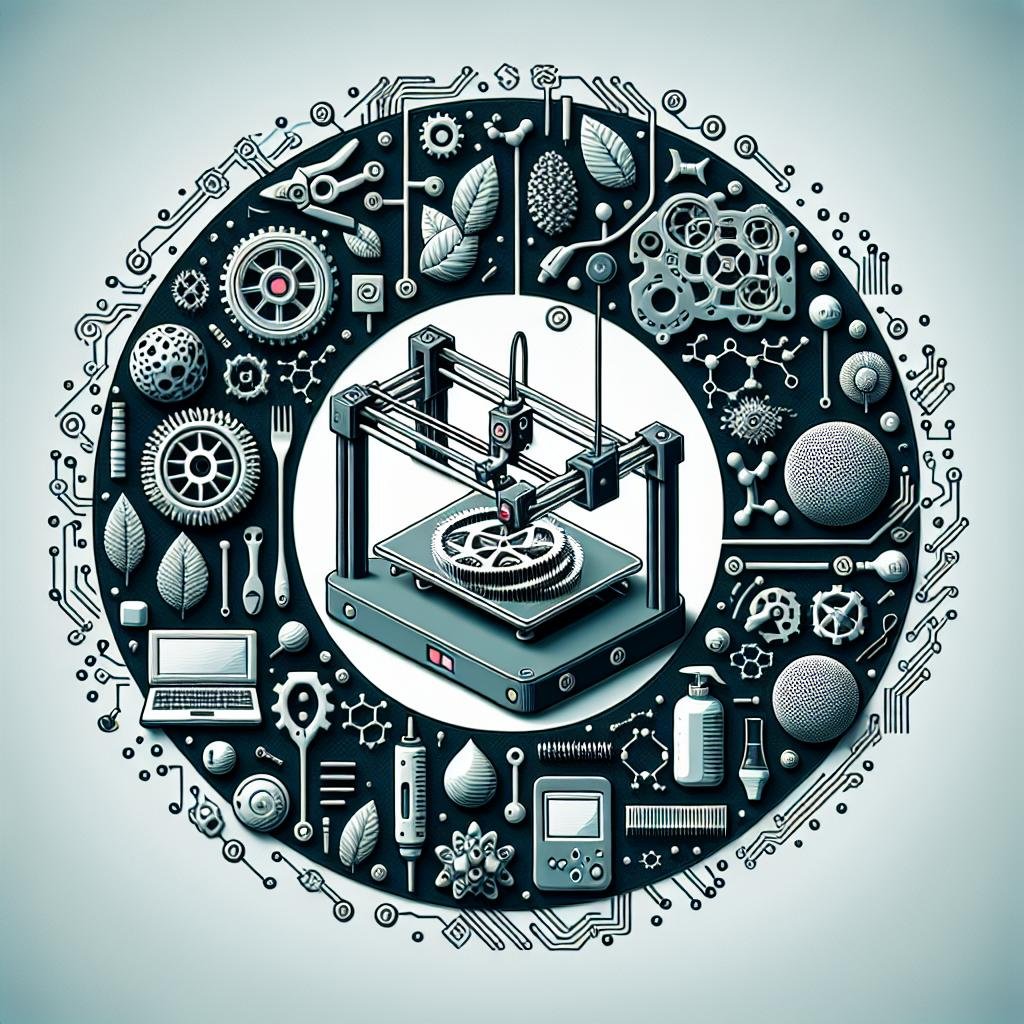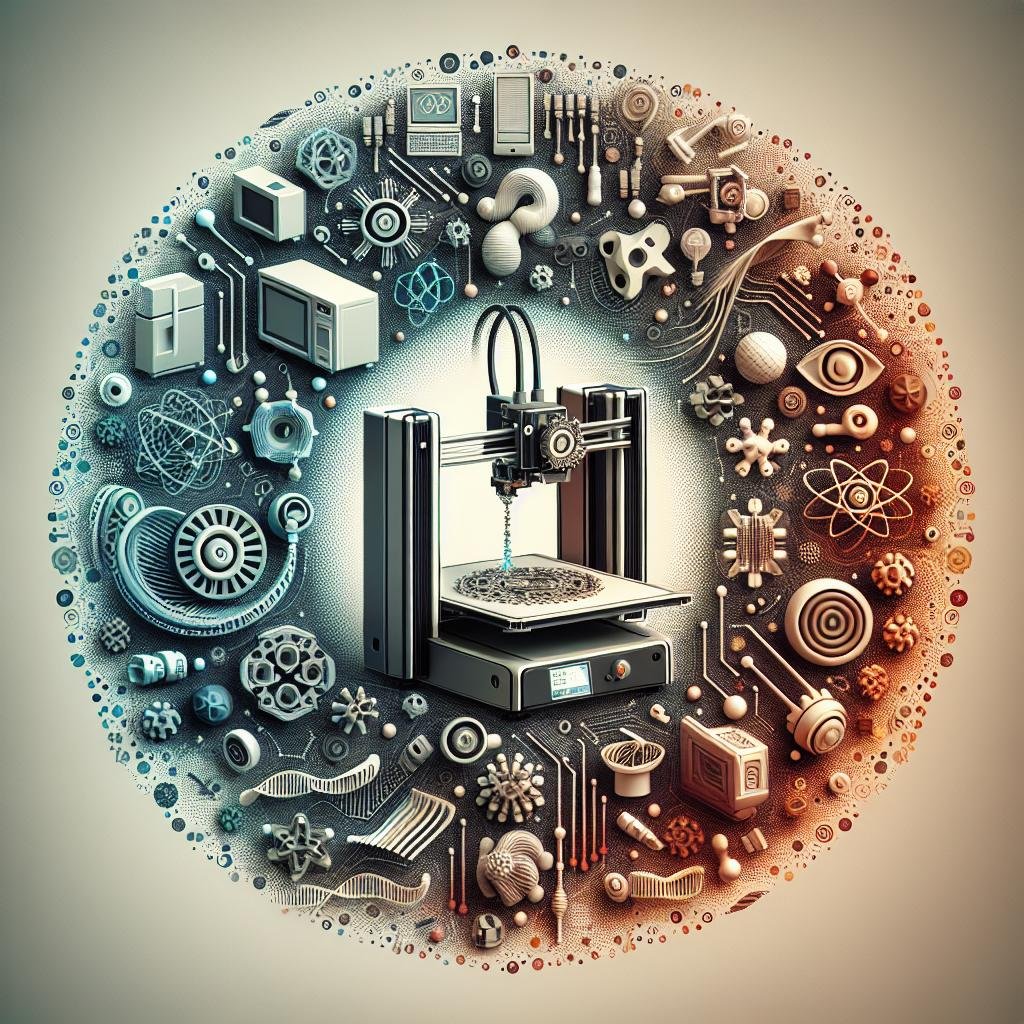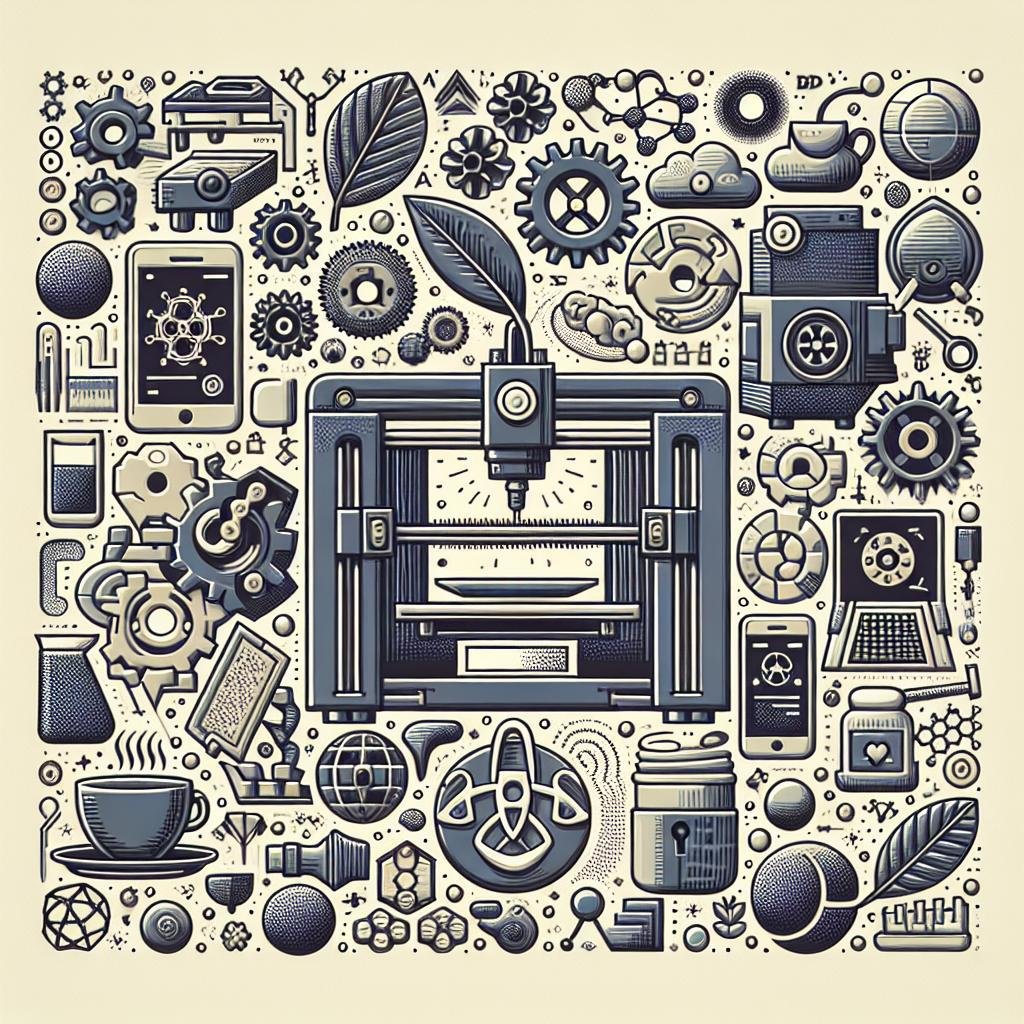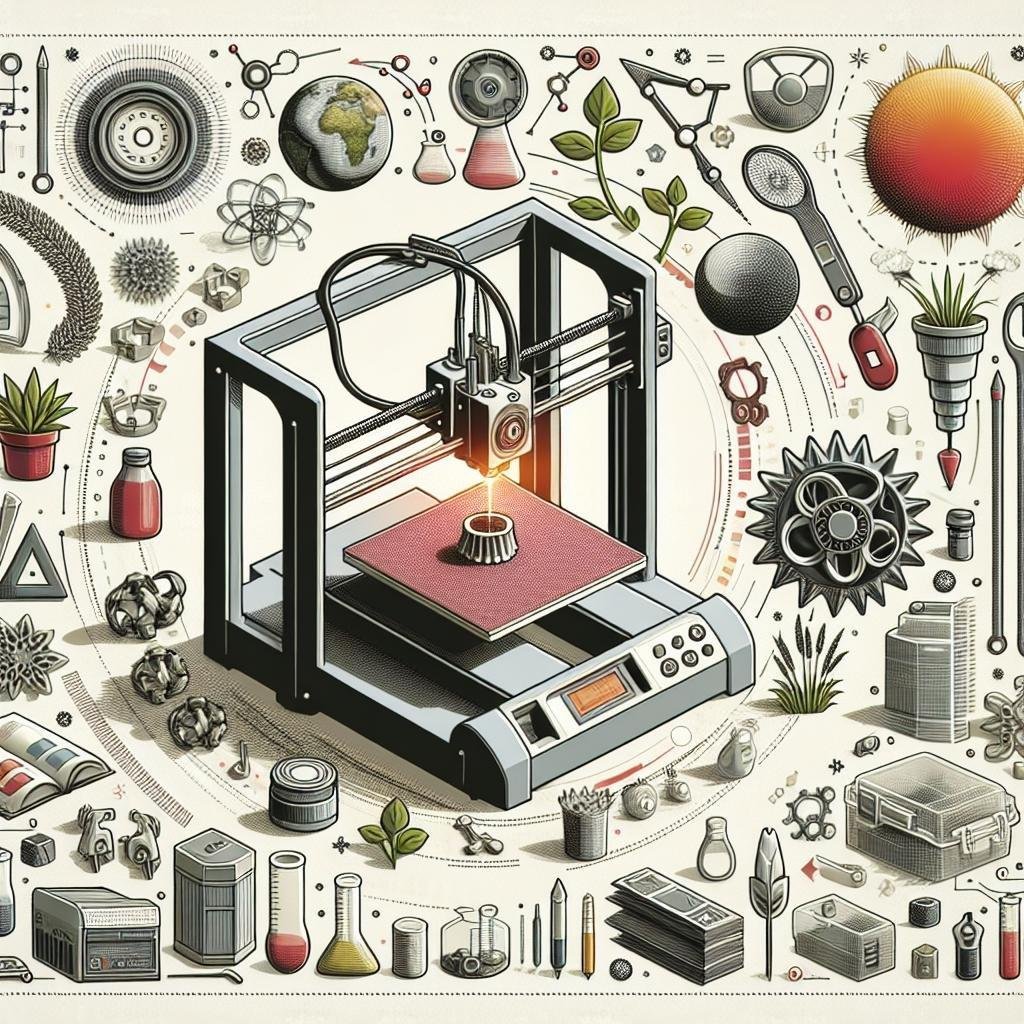In a world where appliances seem to have a knack for breaking down at the most inconvenient times, imagine having the power to conjure up elusive replacement parts right in your own home. Welcome to the exciting frontier of 3D printing, where the once-daunting task of fixing that broken dishwasher latch or the missing refrigerator knob transforms into an adventure of creativity and self-sufficiency. With just a flicker of imagination and a sprinkle of digital wizardry, you can unlock the potential to bring your appliances back to life without the wait or expense of traditional repair routes. Join us on a journey through the magical realm of 3D printing, where practicality meets possibility, and discover how you can become the hero of your household maintenance tale—armed with just a 3D printer, some filament, and a curious mind.
Getting Started with 3D Printing: Tools and Materials Youll Need
Embarking on your journey to create custom replacement parts with a 3D printer is both an exciting and rewarding experience. To begin, you’ll need a few essential tools and materials to ensure you’re set up for success. First, consider investing in a reliable 3D printer, which serves as the core of your creative workspace. You’ll also require filament—available materials include PLA, ABS, and PETG—each offering unique properties suitable for different applications. A caliper can greatly aid in obtaining precise measurements for your parts, while adhesion aids like glue sticks or blue painter’s tape will help keep prints secure on the build plate. Don’t forget spare nozzles and a set of small tools like screwdrivers and pliers; these can be lifesavers when tending to maintenance or making adjustments.
Additional materials will help streamline your process and enhance the quality of your 3D prints. Keep a supply of isopropyl alcohol and microfiber cloths to clean your build plate for optimum adhesion. Consider using a silicone drafting mat to protect surfaces from heat and scratches during post-processing. If you’re printing with temperature-sensitive filaments, a heated enclosure can be invaluable in preventing issues like warping. To keep your filament in pristine condition, a reliable filament storage container or dry box is crucial to avoid moisture absorption. Here’s a quick overview of what you might need, tailored to your specific circumstances:
| Item | Purpose |
|---|---|
| 3D Printer | Core tool for production |
| Filament | Material for printing |
| Caliper | Measurement accuracy |
| Adhesion Aids | Improved print stability |
| Microfiber Cloths | Surface cleaning |

Finding the Perfect Design: Where to Source Replacement Part Files
When you’re ready to dive into the world of DIY 3D printing for appliance parts, knowing where to source your design files is crucial. Online repositories are gold mines of downloadable 3D models. Thingiverse, MyMiniFactory, and Cults3D are treasure troves offering a myriad of designs that suit a wide range of appliances. You’ll find everything from knobs to small internal gears. These platforms often provide reviews and user feedback, giving insight into printability and practical applications. If you have a specific make and model, checking the repository’s search function can uncover hidden gems that match exactly what you need. Many of these sites allow direct interaction with designers, providing opportunities to request modifications or troubleshooting tips.
For those moments when existing designs don’t quite fit the bill, custom CAD design services might be the way to go. Communities like r/FunctionalPrints on Reddit and forums like 3DHubs offer valuable interactions with skilled designers. Services like Fiverr and Upwork connect you to professionals who can craft precise CAD files tailored to your appliance specifications. You may want to compare a few options before hiring, ensuring the best fit for both design quality and budget by checking their reviews and portfolios. Here’s a quick comparison of potential costs and turnaround times:
| Platform | Cost Range ($) | Turnaround Time |
|---|---|---|
| Fiverr | 20 – 100 | 2 – 7 days |
| Upwork | 30 – 150 | 3 – 10 days |
With these resources, crafting the perfect replacement part becomes an exciting adventure rather than a daunting chore. Happy printing!

Mastering the Art of Customization: Tweaking Designs for Optimal Fit
When diving into the exciting world of 3D printing, precision is key, especially when replacing components of your well-loved appliances. Customization is where the magic happens—transforming a generic design into something exquisitely tailored to your needs. Start by carefully measuring the part you need to replace. A digital caliper can be your best friend in this process. Next, with the plethora of free software available, tweaking these design files becomes an art form. TinkerCAD and Fusion 360 are favorites among hobbyists and professionals alike. The nuances—adding unique bends, bumps, or textures—truly breathe life into your project, ensuring not only a perfect fit but also durability when used. Remember, the little details matter; refining your design can save hours of reprints later on.
Crafting a masterpiece takes more than just an understanding of shape and size. It’s about knowing your material and its properties. PLA, ABS, and PETG each offer different durability and flexibility, making the choice crucial to the part’s functionality. A quick comparison can help:
| Material | Strength | Best For |
|---|---|---|
| PLA | Good | Brittle items |
| ABS | Excellent | Heat-resistant parts |
| PETG | High | Durable, flexible items |
- Consider wall thickness: Thicker walls enhance strength.
- Test prototypes: Don’t hesitate to print smaller test pieces.
- Fine-tune print settings: Layer height and infill percentage can dramatically impact the part’s performance.
Every tweak and choice brings your replacement part closer to perfection, paving the way for seamless integration into your appliance.

Ensuring Durability: Best Practices for Printing and Material Selection
When embarking on the journey to create durable 3D printed replacement parts for your household appliances, it’s crucial to focus on both the material choice and the printing process. For plastics, PLA and ABS are common choices, known for their ease of use and versatility. However, for parts requiring greater strength and heat resistance, PETG and Nylon come highly recommended. Metal-infused filaments and carbon fiber blends may also be explored for stronger applications, ensuring your creations stand the test of time. Factor in the appliance’s working environment; if it faces high temperatures, UV exposure, or friction, prioritize materials optimized for such conditions.
- Ensure Proper Infill: Use at least 50% infill for strong, durable parts.
- Layer Height: Opt for a lower layer height for increased strength.
- Print Temperature: Calibrate your printer for optimal adhesion and strength.
- Post-Processing: Sanding and annealing can enhance strength.
| Material | Features | Best Use |
|---|---|---|
| PLA | Biodegradable, Low Cost | Simple, Indoor Parts |
| ABS | Heat Resistant, Durable | Outdoor, Heat Exposure |
| PETG | Flexible, Strong | Mechanical Parts |
| Nylon | Very Strong, Wear-Resistant | High-Stress Environments |
Q&A
Q&A: Mastering the Art of 3D Printing Replacement Parts for Appliances
Q1: What exactly is 3D printing, and how can it help with appliance repairs?
A1: Imagine having a magical, miniature factory right at home. That’s 3D printing in a nutshell! It allows you to create solid objects from digital models. When it comes to appliances, 3D printing is a lifesaver. Instead of hunting down rare parts or waiting weeks for replacements, you can simply print the parts you need, often saving time and money in the process.
Q2: Can anyone start 3D printing their own appliance parts, or do you need to be a tech wizard?
A2: Absolutely! The beauty of today’s technology is that it’s more accessible than ever. While having a knack for gadgets is helpful, there’s no need to be a tech wizard. With the right resources and a bit of patience, anyone can dive into the world of 3D printing. Many user-friendly printers and design software are available, perfect for beginners and seasoned tinkerers alike.
Q3: What equipment do I need to start 3D printing replacement parts?
A3: You’re just a few tools away from your DIY repair shop! To start, you’ll need a 3D printer (which range from budget-friendly to advanced models), some filament (the material your parts will be made of, often plastic or resin), and design software (there are fantastic free options like TinkerCAD or Blender). Optional, but handy, are a digital caliper for precise measurements and an enclosure to keep your printer environment stable.
Q4: How do I find or create the designs for the parts I need?
A4: Creativity meets utility here! Start by searching online repositories like Thingiverse or MyMiniFactory, where enthusiasts share thousands of ready-to-print files. If you can’t find a match, consider designing your own. Don’t worry—designing can be simple with the right tutorial, and it’s a great skill to hone. Just be sure to get the measurements right for a perfect fit!
Q5: What should I watch out for when printing replacement parts?
A5: Precision is key, my DIY friend! Double-check measurements and printer settings before hitting “print.” Pay attention to the part’s function, strength, and heat resistance. Some parts need extra durability, so choose your filament wisely. Always think about the environment where your part will go—exposing it to high heat or heavy use? Opt for robust materials like ABS or Nylon.
Q6: Are there any limitations to 3D printing parts for appliances?
A6: Every superhero has their kryptonite! While 3D printing works wonders, it has its limits. Complex or internal components that require precise engineering, like motors or electronics, are best sourced from professionals. Stick to non-structural or smaller mechanical parts to ensure safety and effectiveness.
Q7: Do you have any final tips for successful 3D printing adventures?
A7: Indeed, dear maker! Keep experimenting—it’s all about learning. Join online forums or local maker groups to exchange tips and successes. Be patient; each print is a step closer to perfection. Most importantly, have fun! You’re not just fixing a dishwasher or sprucing up a vacuum—you’re pushing the boundaries of home innovation.
Happy printing, and may your appliances live long and prosper!
Key Takeaways
As we wrap up our journey into the world of 3D printing replacement parts for your appliances, it’s clear that the future of DIY repairs is not just bright—it’s dazzling with possibilities. From the simple to the complex, you’ve now got the tools and know-how to breathe new life into your trusty old machines. Empowered by your new skills, you’re not only saving money but also contributing to a more sustainable world by reducing waste. So, next time a gadget gives up the ghost, remember: in your hands, a bit of plastic and a dash of creativity can work wonders. Happy printing, and may your home be ever efficient and full of life!

